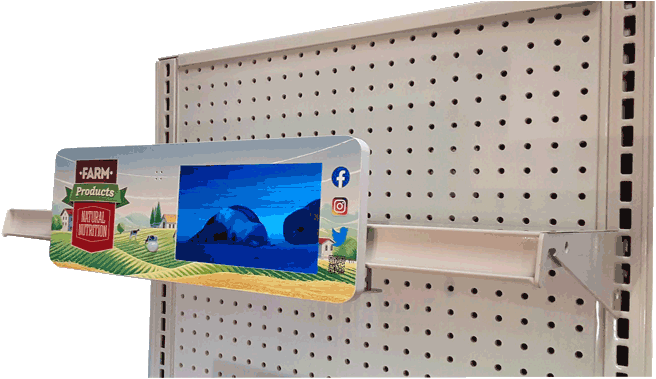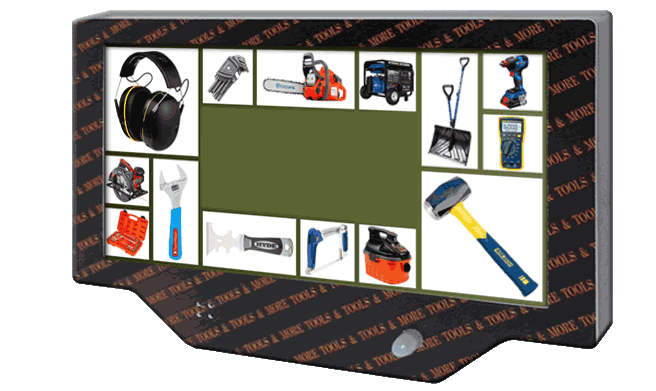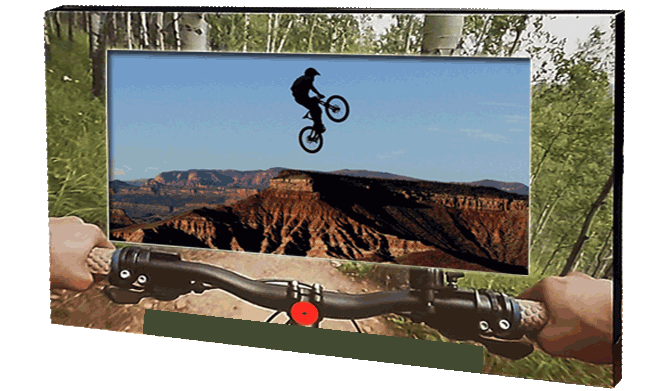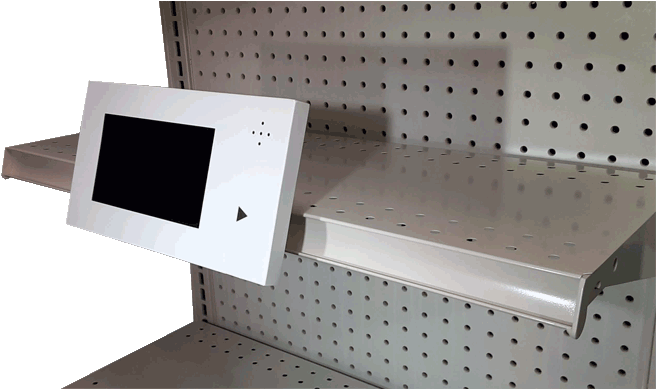Promotional Displays: An In-Depth Guide
Retail Shelf Talkers
Retail Shelf Talker
Introduction
Retail shelf talkers play a crucial role in the ever-evolving and competitive world of retail marketing. They help guide shoppers' choices, promote special offers, and even create unique, personalized experiences. This comprehensive guide will delve into the world of retail shelf talkers, covering their different types, benefits, and how to design and place them effectively. We'll also discuss how to test and measure their performance and provide answers to some frequently asked questions. So, let's dive in and explore the power of retail shelf talkers.
What is a Retail Shelf Talker?
A retail shelf talker is a promotional tool used by retailers to attract shoppers' attention and influence their purchasing decisions. They are placed on store shelves or other displays, often highlighting a product's features, price, or promotional offers. Shelf talkers come in various forms and can range from simple paper tags to advanced digital displays.
Why Shelf Talkers Matter in Retail
In today's fast-paced retail environment, shoppers are often overwhelmed with choices. Shelf talkers help to simplify the decision-making process by drawing attention to specific products, making them stand out among competitors. They also allow retailers to communicate key information about a product, helping customers make informed choices and feel more confident in their purchases.
Materials and Styles of Shelf Talkers
Shelf talkers can be made from various materials, including paper, plastic, metal, and even fabric. The choice of material can impact the overall look and feel of the shelf talker, as well as its durability and ease of maintenance. The style of a shelf talker can also vary significantly, ranging from simple text-based designs to elaborate, visually striking creations. Some common styles include:
- Die-cut Shelf Talkers: These shelf talkers are cut into unique shapes that are relevant to the product or brand, adding visual interest and helping the shelf talker stand out.
- Fold-over Shelf Talkers: This type of shelf talker is designed to fold over the edge of a shelf, providing a double-sided display that can be seen from different angles.
- Wobbler Shelf Talkers: These shelf talkers are mounted on a flexible arm, allowing them to "wobble" or move when touched or disturbed, drawing even more attention to the product.
Types of Shelf Talkers
1. Paper Shelf Talkers
The simplest and most cost-effective type of shelf talker, paper shelf talkers are usually printed tags that can be easily attached to a shelf or display. They come in different shapes, sizes, and colors, providing a versatile way to draw attention to specific products.
2. Digital Shelf Talkers
Digital shelf talkers utilize electronic displays, such as LED or LCD screens, to showcase product information and promotions. They offer the advantage of being easy to update, allowing retailers to change the content without the need for reprinting.
3. Interactive Shelf Talkers
Interactive shelf talkers are the most advanced type, incorporating touchscreens or other interactive elements that engage customers and provide a more personalized shopping experience.
Benefits of Using Shelf Talkers
1. Grabbing Attention
Shelf talkers are effective in grabbing shoppers' attention and directing it to specific products or offers. This helps break through the clutter and noise of a busy retail environment.
2. Boosting Sales
By highlighting key product features, benefits, or promotions, shelf talkers can entice customers to try new products or choose one brand over another, ultimately boosting sales.
3. Promoting Special Offers
Retailers can use shelf talkers to draw attention to special offers, discounts, or limited-time deals, encouraging shoppers to take advantage of these promotions.
4. Creating a Personalized Shopping Experience
Interactive shelf talkers can help create a more personalized shopping experience by engaging customers and providing tailored product recommendations based on their preferences.
The Role of Shelf Talker Maintenance
Maintaining the appearance and functionality of your shelf talkers is essential for their ongoing effectiveness. Regularly inspect and clean your shelf talkers to ensure they remain in good condition and replace any damaged or outdated talkers as needed. Additionally, keep a close eye on inventory levels for the products promoted by your shelf talkers, as an empty or poorly stocked shelf can undermine the impact of your shelf talker.
Incorporating Shelf Talkers into Your Overall Marketing Strategy
Shelf talkers should not be viewed as a standalone marketing tactic but rather as one component of a comprehensive in -store marketing strategy. To maximize their effectiveness, integrate shelf talkers with other promotional elements, such as in-store signage, endcap displays, and floor decals. Consider incorporating shelf talkers into your broader marketing campaigns, ensuring that the messaging and design are consistent with your other advertising efforts, both online and offline.
Examples of Shelf Talker Success Stories
Various retailers and brands have experienced significant success by leveraging the power of shelf talkers. Here are a couple of examples:
-
- Wine Retailer: A wine retailer used shelf talkers to highlight staff picks, pairing suggestions, and customer reviews. This helped guide customers in their selection process and resulted in increased sales of the featured wines.
- Organic Food Store: An organic food store used shelf talkers to emphasize the health benefits and sourcing practices of its products. This helped differentiate the store's offerings from conventional competitors and reinforced the store's commitment to sustainability and health.
Challenges and Potential Pitfalls of Using Shelf Talkers
While shelf talkers can be highly effective, they may also present some challenges and potential pitfalls:
- Overuse: Too many shelf talkers can create visual clutter and overwhelm shoppers. Limit the number of shelf talkers in a given area to maintain their impact.
- Inconsistency: Ensure that your shelf talkers are consistent with your overall branding and messaging, as inconsistent or conflicting information can confuse customers and weaken your brand image.
- Regulatory Compliance: Some industries, such as food and beverage or pharmaceuticals, may have specific regulations regarding the information that can be displayed on shelf talkers. Be sure to familiarize yourself with any applicable regulations and ensure your shelf talkers are compliant.
Shelf Talker Trends and Innovations
As technology continues to advance, so too do the capabilities and possibilities of shelf talkers. Some current trends and innovations in the space include:
- Augmented Reality (AR) Shelf Talkers: By incorporating AR technology, shelf talkers can provide an immersive and interactive experience, allowing shoppers to access additional information, videos, or even 3D models of the product.
- Data-Driven Shelf Talkers: Retailers can leverage data analytics to optimize shelf talker content and placement, ensuring that they are targeting the right customers with the most effective messaging.
- Sustainability-Focused Shelf Talkers: As environmental concerns become increasingly important to consumers, retailers can use eco-friendly materials and designs for their shelf talkers to demonstrate their commitment to sustainability.
How to Design Effective Shelf Talkers
1. Eye-catching Design
An effective shelf talker should have a visually appealing design that stands out from its surroundings. Use bold colors, interesting shapes, and high-quality images to catch the shopper's eye.
2. Keep it Brief
Shoppers typically make quick decisions, so your shelf talker should communicate the message concisely. Stick to short, impactful sentences and bullet points that can be easily skimmed.
3. Use Clear Messaging
Ensure that the messaging on your shelf talker is clear and concise, focusing on the key features or benefits that will resonate with your target audience. Avoid using jargon or overly technical terms that might confuse shoppers.
Placement of Shelf Talkers
The placement of shelf talkers is crucial to their effectiveness. They should be positioned at eye level or slightly below, making it easy for shoppers to spot them. Additionally, placing them near related products or in high-traffic areas can help maximize their visibility and impact.
Testing and Measuring Shelf Talker Performance
To get the most out of your shelf talkers, it's essential to test and measure their performance. This can be done by tracking sales data for the products they promote and comparing it to baseline sales figures. You can also conduct customer surveys or use in-store observation to gauge the effectiveness of different designs and placements.
Conclusion
Retail shelf talkers are an invaluable tool for capturing shoppers' attention, guiding their choices, and ultimately driving sales. By carefully considering the design, content, placement, and integration of shelf talkers into your overall marketing strategy, you can harness their full potential and create a more engaging and successful retail environment.
FAQs
1. How often should I update my shelf talkers?
The frequency of updating your shelf talkers will depend on the type of product and the shelf talker itself. For example, if you're using digital or interactive shelf talkers, you may update them more frequently to keep the content fresh and engaging. For paper shelf talkers, it's a good idea to update them when there are new promotions, seasonal changes, or significant updates to your product line.
2. Are shelf talkers suitable for all types of retail stores?
Shelf talkers can be adapted for various retail environments, including supermarkets, department stores, specialty retailers, and even small boutiques. The key is to choose the appropriate type and design that aligns with your store's brand and target audience.
3. Can I use shelf talkers to promote services instead of products?
Absolutely! Shelf talkers can be an effective way to promote services, such as in-store consultations, workshops, or loyalty programs. Just make sure to adapt the design and messaging to showcase the benefits and value of the service you're offering.
4. What is the most important aspect of an effective shelf talker?
While there are several factors to consider, the most critical aspect of an effective shelf talker is its ability to grab the shopper's attention and convey a compelling message. This can be achieved through a combination of eye-catching design, clear messaging, and strategic placement within the store.
5. How can I ensure that my shelf talkers are compliant with accessibility guidelines?
To ensure that your shelf talkers are accessible to all shoppers, consider using large, easy-to-read fonts and high-contrast colors. For digital and interactive shelf talkers, make sure that the content can be easily navigated and understood by individuals with varying abilities.



